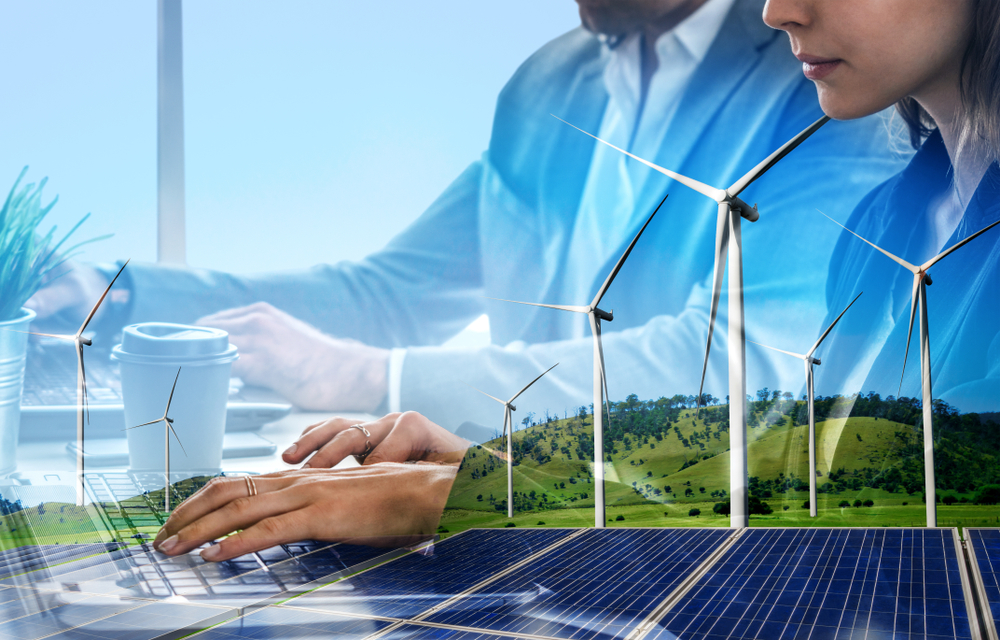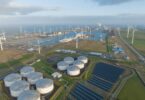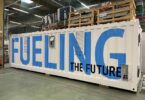Transmutex, a 2023 World Economic Forum Technology Pioneer, is capitalizing on research validated at the European Organization for Nuclear Research to conceive an entirely new approach to nuclear energy, using particle accelerators to induce nuclear waste transmutation and produce carbon-free nuclear energy, in the hopes of speeding up the race to Net Zero.
“We have the ambition to accelerate the fight against climate change and reach industrial-scale within 10 years,” says Transmutex CEO Franklin Servan-Schreiber, a speaker at the Forum’s Annual Meeting Of The New Champions in Tianjin, China June 27-29. He says Transmutex’s solution is safer than traditional nuclear power plants because its approach does away with the danger of explosions; is cleaner because it uses thorium as fuel, which produces negligible amounts of long-lived waste; and it does away with the risk of proliferation since the technology can not be used to make nuclear bomb material.
Transmutex, along with other new players such as newcleo, Radiant, Terrestrial Energy, X-Energy and NANO Nuclear Energy, use small modular reactors (SMRs) which can be built more quickly and cheaply than traditional nuclear power plants. While SMRs are increasingly being seen as a viable near-term addition to the energy mix, innovative clean energy approaches alone will not help the world get to Net Zero and ensure affordable energy for everyone.
After a decade of progress, the global energy transition has plateaued amid the global energy crisis and geopolitical volatility, according to a new World Economic Forum report called Fostering Effective Energy Transition 2023. Countries have shifted their focus to maintaining secure and stable energy supply at the expense of universal affordability.
“The recent turbulence in energy markets has exposed how interconnected energy prices are with macroeconomic and social stability. This can, and has, put developing countries at risk of losing their momentum gained before the energy crisis on access to affordable, sustainable energy,” Roberto Bocca, the Forum’s Head of Energy, Materials and Infrastructure,said in a statement.“It further demonstrates the importance of balancing improvements in energy security, sustainability and equity – at the same time – to enable an effective energy transition.”
Scaling new technologies and ensuring energy equity will require huge amounts of capital as well as new types of collaborations and actions by governments, financial institutions, and large corporates in traditional businesses, says Maciej Kolaczkowski, who oversees the Forum’s new Advanced Energy Solutions community.
The International Energy Agency (IEA) estimates that around $2.8 trillion will be invested in energy in 2023. More than $1.7 trillion is going to clean energy, including renewable power, nuclear, grids, storage, low-emission fuels, efficiency improvements and end-use renewables and electrification. The good news is that for every $1 spent on fossil fuels, $1.7 is now spent on clean energy.
Deploying SMRs and other new solutions – such as peer-to-peer energy generation, green hydrogen, innovations in fusion, electric car charging, energy storage and carbon management technologies – at scale will require significant additional investment. The IEA notes that $0.9 trillion needs to be invested by 2030 to modernize electricity networks and build public electric vehicle charging stations, hydrogen refueling stations, direct air capture and CO2 pipelines, storage facilities, and import and export terminals. Another $1.7 trillion needs to be invested annually in low-carbon technologies in end-use sectors, according to the Forum’s report. Most of this investment will need to come from the private sector, supported by public policies that create incentives and set appropriate regulatory frameworks.
Like wind and solar, the giga scale and industrialization of advanced solutions have the potential to drive down costs so there is a need to exponentially accelerate the speed and scale of their deployment, says the report. For example, to be on the path to Net Zero by 2050, the energy system needs to see battery storage capacity grow 15 X and carbon capture, usage and storage grow 40 X by 2030. Similarly, the clean hydrogen market is expected to grow from $0.5 billion to $120 billion and advanced biofuels from $3 billion to $180 billion.
Challenges include the fact that the risk appetite of financial institutions is not always tailored to support these advanced solutions and that only a small fraction of these investments go to emerging markets and developing economies, says the report. In addition, sovereign and currency risks, the lack of standards and regulations, and slow permitting processes remain significant barriers to clean energy investments in these economies.
The new Forum community, which is comprised of technology companies, project developers, financial institutions, investors, and the large corporates who will buy the green solutions, aims to help speed up deployment of advanced energy solutions from decades to years , says Kolaczkowski.
Action is urgent. The to-do list includes streamlining permitting, incentivizing the purchase of clean energy sources and accelerating commitments from large corporates to purchase green energy from new entrants. “Countries must move at a faster pace than they are now to transform their energy systems; moreover, the window for such effort is closing,” says the report.
Key Takeaways
The 13th edition of the Forum’s report, published in collaboration with Accenture, draws on insights from the Energy Transition Index (ETI). This year, the ETI used an updated framework reflecting emerging shifts in the global energy landscape to benchmark 120 countries in two areas: the performance of their energy systems in the dimensions of equity, energy security and environmental sustainability; and the readiness of the enabling environment for energy transition. This edition also evaluated countries’ “transition momentum” for the first time to highlight the urgency of consistent progress.
Here are some of the key takeaways from the report:
*Thanks to increasing volumes of clean energy investments, improving regulatory frameworks, technological innovations, and urgency to address the climate crisis, some long-term trends of global energy transition are positive. Over the past decade, 95% of countries have improved their total ETI score, with improvements more pronounced for countries that consume a large amount of energy, including China, India, Republic of Korea and Indonesia. But ETI scores declined for approximately 50% of the countries in the past year, which disproportionately impacted vulnerable consumers, small businesses and developing economies.
*Sweden (1), Denmark (2) and Norway (3) lead the ETI 2023 rankings and have been the top three countries each year for the past decade. Despite their diverse energy system structures, they share common attributes, such as high levels of political commitment and stable regulatory frameworks, investments in research and development, increased renewable energy deployment and carbon pricing schemes to incentivize investments in low-carbon solutions.
*France (7) is the only G20 country in the top 10, followed closely by Germany (11), the US (12), and the UK (13). Strong performance by the world’s largest economies, supported by the rapid development of renewable energy infrastructure and rising levels of investments in clean energy, is a signal of progress on the energy transition. Exposure to gas price volatilities is a risk factor to the inclusiveness of the energy transition, as demonstrated by the recent energy crisis and its fiscal and monetary implications, especially for European countries.
*Brazil (14) and China (17) are the major emerging economies to appear in the top 20. Due to abundant hydroelectricity capacity and leadership in biofuels, Brazil scored high on energy security and environmental sustainability, accounting for 7% of renewable energy production worldwide. China leads on renewable energy investments and capacity development, supported by mature domestic supply chains, and in the incubation of industries such as electric vehicles and energy storage.
*The long-term goals of the energy transition require sustained momentum in the wake of the current near-term volatilities. India (67) and Singapore (70) are the only major economies showing true momentum by advancing sustainability, energy security and equity in a balanced way. For example, despite continued economic growth, India has successfully reduced the energy intensity of its economy and the carbon intensity of its energy mix, while achieving universal energy access and effectively managing affordability of electricity.
*Looking at each facet of energy system performance, fuel-exporting nations – Oman (90), Canada (19), Saudi Arabia (57) and Qatar (59) – scored among the highest in equity and inclusiveness, providing affordable energy for households and industries and leveraging the energy sector to empower economic growth. Notably, the US, Sweden, and Israel (28) also score high on this dimension, largely due to cost-reflective energy prices and leadership on trade in low-carbon technology products.
*Advanced economies – the US, Australia (24) and Estonia (10) – scored highest in energy security, measuring the resilience and reliability of supply. A highly diversified energy mix, low dependence on fuel imports and limited interruptions in energy supply were contributing factors. Notably, they were closely followed by an emerging economy, Malaysia (35).
*The report revealed that many countries – amounting to over 90% of global emissions – are prioritizing sustainability, focusing on policies and programmes that promote energy conservation, renewable technologies and innovation in energy storage and grid modernization. Latin America led the way, with low levels of carbon intensity in energy supply, low per capita emissions and a high share of clean energy in final demand. Paraguay (34), Costa Rica (25) and Uruguay (23) in particular reaped the advantages of their abundant hydroelectric potential.
*When it comes to progress on energy transition, the gap between advanced economies and emerging and developing countries in Asia, Central and Eastern Europe and Sub-Saharan Africa has gradually narrowed over the past decade. As advanced economies and large emerging economies such as China and India push the boundaries of energy transition, propelled by ambitious industrial policy packages, progress in clean electrification, technology-intensive solutions for the decarbonization of heavy industries and advanced nuclear, there is a risk of that gap widening again.
The Need For Public-Private Collaboration
Virtually all technologies needed by 2030 already exist to achieve the Net Zero energy system by 2050, says Kolaczkowski. And advanced energy solutions are being deployed at accelerating rate and scale. However, this is still not fast and big enough from the energy system perspective. “The challenge is that we need to achieve in years what took wind and solar decades,” he says.“This will require systemic approaches guided by policy and innovators, large energy producers and users, and investors to form partnerships and play their part.”
This article is content that would normally only be available to subscribers. Sign up for a four-week free trial to see what you have been missing.
To read more of The Innovator’s Energy Transition stories click here.
“







